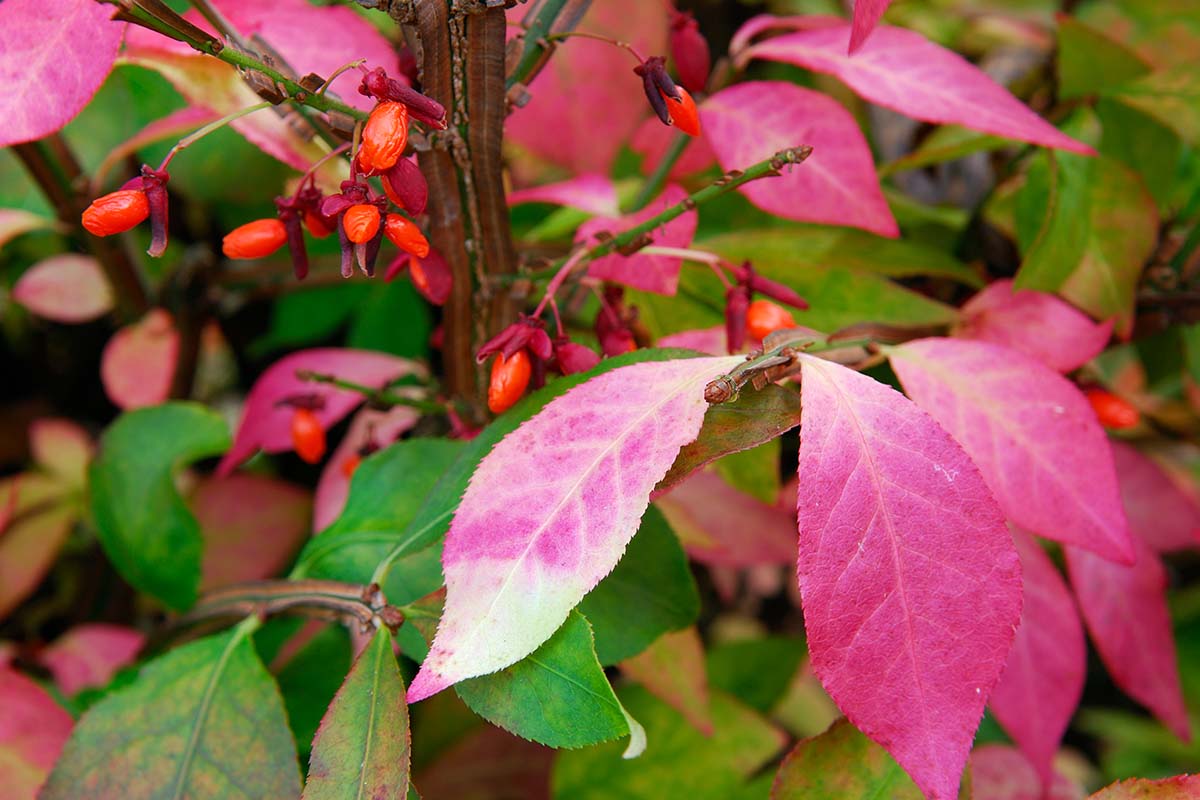If you have noticed the leaves on your burning bush turning white, you’re probably wondering what’s causing it and how to fix it The burning bush, also known by its botanical name Euonymus alatus, is a popular landscape shrub known for its vibrant red fall foliage So when those leaves start turning an abnormal color like white, it’s cause for concern. In this article, we’ll cover the most common reasons burning bush leaves turn white and what you can do about it.
Powdery Mildew Fungal Infection
One of the most common causes of white spots or powder on burning bush leaves is powdery mildew. This fungal disease thrives in warm, dry conditions. Tiny white or grayish fungal spores coat the leaf surfaces, eventually causing distorted, discolored, or prematurely dropping leaves. If untreated, powdery mildew can severely weaken the plant.
Luckily, powdery mildew is treatable if caught early. Prune out any heavily infected branches. Improve air circulation around the plant by thinning dense growth. Remove and destroy fallen leaves to eliminate spore sources. Organic fungicides containing neem oil, sulfur, or bicarbonates can be applied as a preventative or treatment. Always follow label instructions carefully.
Environmental Heat Damage
If the leaves are turning white themselves, this is typically caused by heat damage. Most commonly, we see it when plants are not properly acclimated when brought from inside to outside.
Sudden exposure to hot sun can scorch the leaves, turning them white or brown. Make sure to gradually transition indoor burning bushes outside over 7-10 days. Start by placing them in bright shade, slowly increasing light levels. This allows the plant to adjust and build up protective pigments.
Proper watering is also key when acclimating. Don’t let plants dry out. Heat stressed leaves won’t recover, but you can prune them off to improve appearance. Just be sure to correct conditions to prevent further damage.
Sun Scald
Similar to heat damage, sun scald can turn burning bush leaves white, especially on cold sunny winter days The bright sun heats leaf surfaces to very high temperatures Meanwhile, roots in frozen soil can’t take up water fast enough to cool the leaves. This temperature shock causes cell damage.
To prevent sun scald, don’t prune burning bushes late in fall. Leave protective foliage layers intact going into winter. Shelter plants from harsh winds. Water thoroughly when soil thawed to keep roots active. Treat any damaged leaves as you would for heat stress. Boost winter hardiness with fall mulching.
Improper Winter Care
Winter weather itself can take a toll on burning bushes. If leaves emerge too early in late winter during a warm spell, they are prone to damage when cold snaps return.
Prevent premature leafing by providing consistent winter mulch. This insulates soil and protects roots from fluctuating air temperatures. Remove mulch in spring once temperatures stabilize above freezing. Also avoid excessive late winter fertilization which can push top growth too early.
Nutrient Deficiencies
Various nutrient deficiencies can causes burning bush leaves to turn white or yellow. Iron, magnesium, sulfur, potassium, and nitrogen deficiencies show characteristic patterns of discoloration. Without correction, leaves may drop early or plant growth declines.
Identify which nutrient is lacking based on symptom patterns. Then supplement soil appropriately, either with compost/manures or targeted chemical fertilizers. Don’t over-fertilize; only apply what soil tests indicate is required. Ensure plants are well-watered so they can take up added nutrients.
Root Damage
White leaves on burning bushes can also indicate damaged or diseased roots. Root rot fungi thrive in overly wet soil. Drought stress, poor drainage, and compacted soil can also reduce healthy root function. This impairs water and nutrient uptake to leaves.
Carefully excavate plants showing aboveground distress. Examine roots for dark rotted areas or stunted weak growth. Prune out problem roots. Replant in well-draining soil, avoiding excessive irrigation. Improve problematic native soil with organic matter. Spread roots out fully when replanting.
Scale Insect Infestation
Soft scale insects are another potential cause of leaf discoloration. These small sap-sucking bugs secrete a sticky honeydew substance. Sooty black fungal growth may coat leaves. Ants are also a sign of scale. Heavy infestations cause yellowing, wilting, and leaf drop.
Prune out heavily infested branches. Use a strong spray of water to dislodge some insects. Horticultural oils or insecticidal soaps can help control scale populations. Persistent infestations may need chemical treatment. Attract beneficial insects like ladybugs and lacewings to be natural predators.
What To Do If Your Burning Bush Leaves Are Turning White
If you notice white spots, powder, or discoloration on your burning bush’s leaves, take a close look to determine the possible cause. Check for any pests like scale. Inspect the overall plant for signs of stress or disease.
When in doubt, take a sample to your local nursery or extension office for expert diagnosis. This will help you get to the root of the problem and treat it effectively. Act promptly at the first signs of trouble to restore your burning bushes to their expected vibrant beauty.
Why are the leaves on my plant turning white?
FAQ
Why is my burning bush turning white?
Why are the leaves on my bush turning white?
What does an overwatered burning bush look like?
How do you treat fungus on a burning bush?
- A Complete Guide to Caring for Yuki Cherry Blossom Shrub - January 23, 2025
- Identifying Red Hot Poker Seeds: What to Look For When Harvesting Torch Lily Pods - January 23, 2025
- A Complete Guide to Harvesting Evening Primrose Seeds - January 23, 2025

